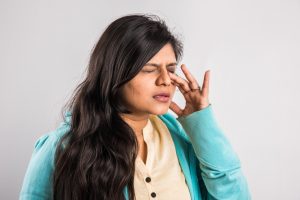
Breast cancer remains the number 1 lethal malignancy in women. With rising incidence and decreased mortality, the number of breast cancer survivors has increased. Consequently, sequelae, such as pain, are becoming more important. The purpose of this study was to identify risk factors for the development of pain in breast cancer survivors.
Seventeen studies were found eligible. Meta-analyses were performed for 17 factors. Significant differences for the odds of developing chronic pain were found for BMI (overall OR: 1.34, 95%CI 1.08-1.67, p = 0.008), education (overall OR: 1.23, 95%CI 1.07-1.42, p = 0.005), lymphedema (overall OR: 2.58, 95%CI 1.93-3.46, p < 0.00001), smoking status (overall OR: 0.75, 95%CI 0.62-0.92, p = 0.005), axillary lymph node dissection (overall OR: 1.25, 95%CI 1.04-1.52, p = 0.02), chemotherapy (overall OR: 1.44, 95%CI 1.24-1.68, p < 0.00001), and radiotherapy (overall OR: 1.32, 95%CI 1.17-1.48, p < 0.00001). After performing moderator analyses for age, comorbidities, hormone therapy, and breast surgery, hormone therapy became a significant risk factor as well (overall OR: 1.33, 95%CI 1.15-1.54, p = 0.0001).
BMI > 30, education < 12-13 years, lymphedema, not smoking, axillary lymph node dissection, chemotherapy, hormone therapy, and radiotherapy were significantly associated with higher odds for the development of chronic pain, with lymphedema being the biggest risk factor. Lack of uniformity across the studies in defining pain, follow-up, measurement tools, and cut-off values for the diagnosis of pain was noted, resulting in greater inter-study variability.
No comments:
Post a Comment